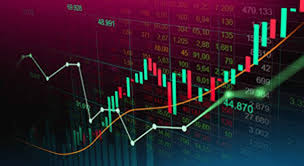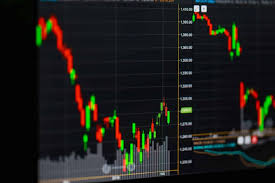The Ultimate Guide to Forex Currency Trading 1710274282

The Ultimate Guide to Forex Currency Trading
Forex currency trading, or foreign exchange trading, is the global marketplace where currencies are bought and sold. It operates 24 hours a day, five days a week, enabling traders to participate at any time. As the largest financial market in the world, the forex market has a daily trading volume exceeding $6 trillion. Understanding the intricacies of this dynamic market is essential for both novice and experienced traders. For those trading in South Africa, resources are available, including forex currency trading Forex Brokers in South Africa, which can provide necessary insights into local trading practices.
What is Forex Trading?
Forex trading involves buying one currency while simultaneously selling another. These transactions occur in currency pairs, such as EUR/USD or USD/JPY. The first currency listed is the base currency, while the second is the quote currency. The exchange rate indicates how much of the quote currency is needed to purchase one unit of the base currency. Traders speculate on the price movements of currency pairs, aiming to profit from the fluctuations in rates.
Understanding Currency Pairs
Currency pairs are categorized into three main types:
- Major Pairs: These pairs involve the most frequently traded currencies, predominantly the USD. Examples include EUR/USD, USD/JPY, and GBP/USD.
- Minor Pairs: These pairs exclude the USD and include currencies like the EUR, AUD, or GBP. Examples include EUR/GBP and AUD/JPY.
- Exotic Pairs: Exotic pairs consist of a major currency paired with a currency from a developing economy, such as USD/TRY (Turkish Lira) or EUR/ZAR (South African Rand).
Forex Trading Strategies

Successful forex trading hinges on effective strategies. Here are some popular strategies employed by traders:
1. Scalping
Scalping involves making numerous trades throughout the day, taking advantage of small price movements. Scalpers aim for quick profits by entering and exiting positions within minutes or seconds. This strategy requires a strict risk management plan and quick decision-making skills.
2. Day Trading
Day trading refers to opening and closing trades within the same day. This prevents overnight risks from market closures. Day traders use technical analysis to spot trends and often rely on price movements to enter and exit trades efficiently.
3. Swing Trading
Swing traders hold positions for several days to capitalize on expected price movements. This strategy focuses on short to medium-term trends and requires analysis of market momentum and price swings.

4. Position Trading
Position traders take a long-term view, holding trades for weeks, months, or even years. This strategy is based on comprehensive market analysis, including fundamental and technical factors, focusing more on macroeconomic trends than immediate price changes.
Risk Management in Forex Trading
Risk management is a critical component of successful trading. It involves safeguarding your capital and minimizing losses. Key risk management techniques include:
- Using Stop-Loss Orders: Set stop-loss orders to automatically close a trade at a predetermined loss level.
- Position Sizing: Determine the appropriate trade size based on your overall account balance and risk tolerance.
- Diversifying Trades: Spread your investments across different currency pairs to mitigate the impacts of market volatility.
- Conducting Regular Analysis: Continually assess your trading performance and adjust strategies based on what works and what doesn’t.
Selecting a Forex Broker
Choosing the right forex broker is essential for a seamless trading experience. Here are some factors to consider:
- Regulation: Ensure the broker is regulated by a reputable authority, which adds a level of safety and security to your funds.
- Trading Platform: Consider the user-friendliness and functionality of the trading platform. A good platform should offer advanced charting tools, indicators, and a reliable execution speed.
- Spreads and Fees: Evaluate the spreads (the difference between the buying and selling price) and other fees associated with trading to ensure they align with your trading style.
- Customer Support: Reliable customer service is essential, especially for new traders. Ensure the broker offers prompt and effective support.
Conclusion
Forex currency trading presents an array of opportunities for traders seeking to engage in a dynamic and liquid market. By understanding currency pairs, implementing effective strategies, and managing risks carefully, traders can significantly improve their chances of success. Additionally, selecting the right forex broker is crucial for a successful trading journey. Whether you are a beginner or an experienced trader, continuous learning and adaptation are key to thriving in the world of forex trading.
